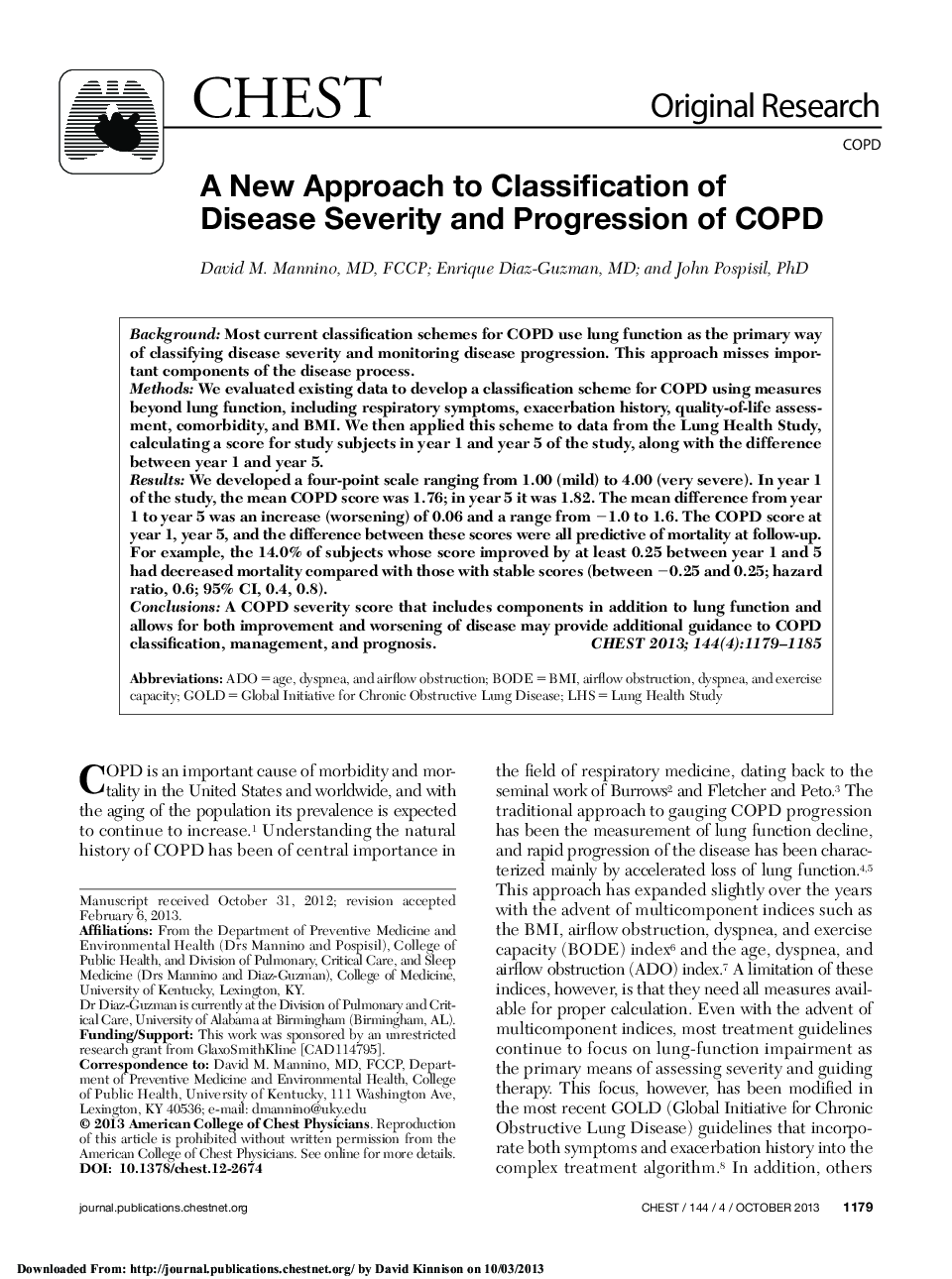| کد مقاله | کد نشریه | سال انتشار | مقاله انگلیسی | نسخه تمام متن |
|---|---|---|---|---|
| 5955465 | 1173328 | 2013 | 7 صفحه PDF | دانلود رایگان |

BackgroundMost current classification schemes for COPD use lung function as the primary way of classifying disease severity and monitoring disease progression. This approach misses important components of the disease process.MethodsWe evaluated existing data to develop a classification scheme for COPD using measures beyond lung function, including respiratory symptoms, exacerbation history, quality-of-life assessment, comorbidity, and BMI. We then applied this scheme to data from the Lung Health Study, calculating a score for study subjects in year 1 and year 5 of the study, along with the difference between year 1 and year 5.ResultsWe developed a four-point scale ranging from 1.00 (mild) to 4.00 (very severe). In year 1 of the study, the mean COPD score was 1.76; in year 5 it was 1.82. The mean difference from year 1 to year 5 was an increase (worsening) of 0.06 and a range from â1.0 to 1.6. The COPD score at year 1, year 5, and the difference between these scores were all predictive of mortality at follow-up. For example, the 14.0% of subjects whose score improved by at least 0.25 between year 1 and 5 had decreased mortality compared with those with stable scores (between â0.25 and 0.25; hazard ratio, 0.6; 95% CI, 0.4, 0.8).ConclusionsA COPD severity score that includes components in addition to lung function and allows for both improvement and worsening of disease may provide additional guidance to COPD classification, management, and prognosis.
Journal: Chest - Volume 144, Issue 4, October 2013, Pages 1179-1185